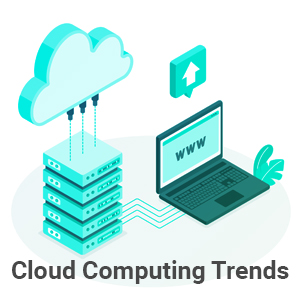


Cloud computing is the delivery of on-demand IT services that includes computing, storage, servers, databases, software, and applications over the web that provide innovations, flexibility, and scalability in business.
It has become one of the most adopted platforms with its enabled digital transformation that resulted in fast growth and improved productivity of IT business.
Though there are certain real-time challenges faced with traditional cloud computing such as security problems, multi-cloud management, increased latency and disaster recovery, which are being overcome by the upcoming trends in cloud computing as follows;
Cloud data security is one of the major concerns, not only for the customer but also for the cloud service provider. The solution to underlying cloud data security challenges in cloud computing includes:
Cloud computing challenges cannot be fixed with just one single cloud. Instead, the demand graph of the multi-cloud environment has grown exponentially with the passing years, because organizations are combining public and private cloud to distribute their workloads. Hence, the adoption of a multi-cloud strategy in cloud computing has improved flexibility and reduced cost, making it preferable for growing businesses.
Increased Latency is one of the attributes that affect network speed and results in the delay of travelling cloud data from source to destination. So, to avoid such inefficiencies, edge computing comes to the forefront. It is a method to enhance the cloud computing network by processing data, application, and compute resources at the edge of the network or nearby to the end-user.
Precisely, edge computing brings computation and data storage to local platforms such as CPU/laptop, IoT device, and edge server instead of centralized cloud computing. This reduces latency with the help of network topology between client and server that results in reduced bandwidth, cloud resources, and cost. Hence, edge computing provides support to large scale enterprises looking for big data solutions.
Network interventions, data interruption, system crash, and network failure are some of the loopholes in cloud computing faced by different businesses. This leads to the loss of important data files and information. To overcome such challenges, disaster recovery and backup have become a trending solution.
It is a cloud computing backup strategy that utilizes cloud resources to protect its data and application in the event of human or natural catastrophes. It favours the organization by providing an entire system backup that allows the smooth functioning of a business. By replicating your entire cloud data, it acts as a secondary infrastructure that enables users and organizations to continue with daily business processes and run applications on VM’s in case the primary system suffers any kind of disaster.
These cloud computing trends are already around the corner of implementation. Enterprises, which intend to increase their dependency on cloud computing should analyze the roles of cloud security, multi-cloud management, edge computing, and cloud data backup to overcome the past challenges and take up the best cloud concepts that meet their business requirements and organizational growth.